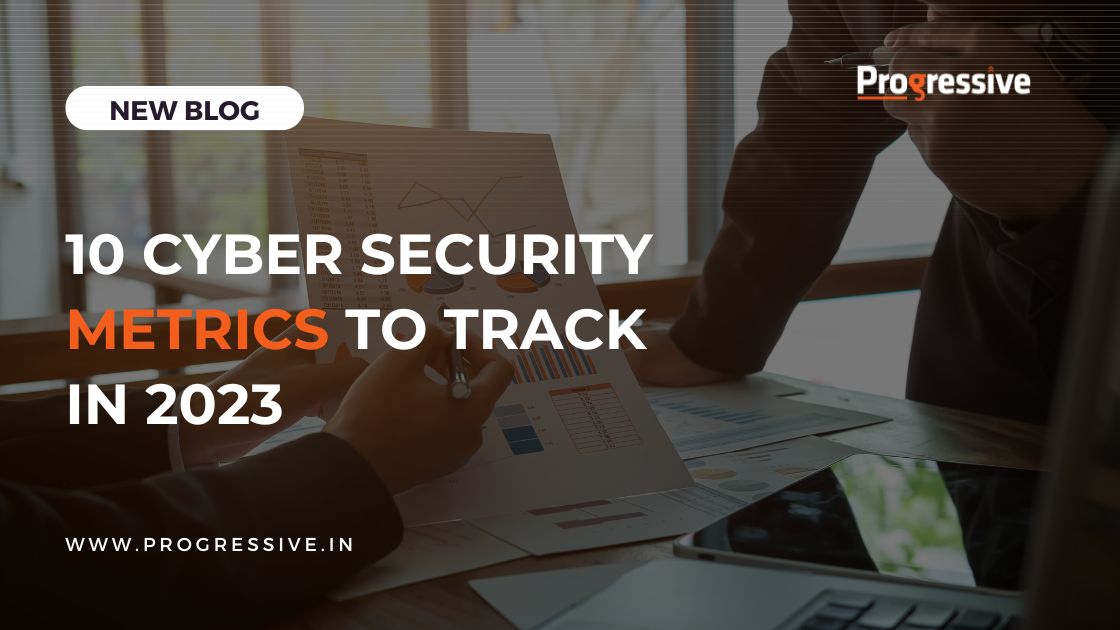
In today’s digital landscape, companies are faced with a constantly evolving threat landscape, making it challenging to stay immune to cyber threats. To tackle the cyber security challenges, it is crucial to determine and measure critical security KPIs and metrics to ensure that the right tactics are in place to detect and respond to potential security incidents.
Here are some reasons why cyber security metrics are important to consider :
- Only a small fraction (less than 15%) of organizations are highly successful in gaining improved insights for making informed decisions, being fully prepared for future cyber incidents, and making data-driven choices that balance risk and revenue. – pwc (2023 Survey)
- According to the accenture research, CEOs with cyber resilience are almost twice as likely (60% vs. 33%) to handle cyber performance akin to financial performance.
- According to Gartner, in the next three years (2022 onwards), 80% of the fines imposed by regulatory bodies following a cyber security breach will result from a lack of evidence demonstrating compliance with the duty of due care, rather than from the consequences of the breach itself.
To effectively manage cyber risk, leaders need a centralized, business-focused view with clear Key Performance Indicators (KPIs) to track progress and compare their performance against peers. CISOs must provide cyber security metrics for the board with actionable insights into the organization’s overall cyber risk, including the value of proactive efforts, and allow security teams to drill down into specific departments or units.
Accurate, business-aligned cyber risk assessments are crucial for improving communication and collaboration, and actionable metrics help security teams demonstrate the value of their work, make informed investment decisions, support cyber insurance, and drive continuous improvement while reducing risk.
Here are the types of metrics in cyber security you need to track –
1. Time to detect and respond to threats
This KPI measures the time elapsed between the detection of a security threat and the initiation of a response to it. The metrics are also termed as MTTD (Mean-time-to-detect) for calculating detection time and MTTR (Mean-time-to-respond) for time spent in a response. A shorter response time can minimize the potential impact of a threat on an organization.
2. Incident response and resolution time
This KPI measures the total time it takes to respond to and resolve a security incident. The metric is also known as MTTC (Mean-time-to-contain). A quicker resolution time can help minimize the overall impact of an incident on an organization.
3. Compliance with industry regulations and standards
These metrics measure an organization’s adherence to relevant cyber security regulations and standards, such as the Payment Card Industry Data Security Standard (PCI DSS) or the General Data Protection Regulation (GDPR).
4. The Number of Intrusion Attempts
The number of intrusion attempts is an essential KPI in cyber security monitoring. This includes identifying the number of successful and unsuccessful intrusion attempts, the type of attacks, and the impact on the business.
5. The Number of security breaches or successful attacks
This KPI measures the number of security incidents that result in unauthorized access, data loss, or theft. A lower number of successful attacks or breaches indicates that an organization’s cybersecurity measures are effective.
6. Amount of Data Lost or Stolen
These metrics are to measure the amount of data that is lost or stolen because of a security breach or attack. A lower amount of data loss indicates that an organization’s cyber security measures are effective in protecting sensitive information.
7. User Awareness and Training Results
These metrics determine the effectiveness of an organization’s security awareness and training program for employees and other stakeholders. High levels of awareness and training can reduce the risk of human error, such as falling for phishing scams.
8. Patching Cadence (Software patch and update management)
This KPI measures the timely and effective application of software patches and updates to address security vulnerabilities. Regular patching and updating minimize the risk of exploits and attacks.
9. Utilization of security tools and systems
These metrics are instrumental in identifying the efficiency and effectiveness of an organization’s security tools and systems. High resource utilization indicates that the tools and systems are functioning optimally, while low utilization may indicate the need for improvement or optimization.
10. Return on investment for security initiatives
These metrics are based on the financial benefits of an organization’s security initiatives compared to the costs of implementing and maintaining them. A high return on investment indicates that the organization’s security measures are providing value and effectively reducing risk.
Businesses must consider the above KPIs before outsourcing cyber security services. These KPIs are essential in identifying areas for improvement. Their importance may vary based on the organization’s goals and priorities, but these indicators can provide valuable insights into the overall health and effectiveness of an organization’s cyber security measures.At Progressive, we strive to provide you with the best possible services based on the types of metrics in cyber security you prioritize.
Contact us today to learn more about how we can help your business stay secure for today and tomorrow.